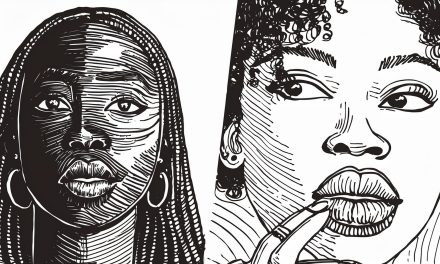Today the story that will take us from the Hiroshima incident to the shocking film “Oppenheimer”. We will discover how uranium and the Belgian Congo became key pieces of this historical puzzle. In addition, we will unravel the dark secrets of colonial ‘education’ and the racism that prevailed at the time. Get ready to learn the real story behind the atomic bomb and how it all relates to Oppenheimer. Join me on this exciting journey through the most hidden corners of our history!
- The Hiroshima Incident and the film “Oppenheimer”.
- Uranium and the Belgian Congo
- Colonial ‘Education’ and Racism
- The True Story Behind the Bomb
The Hiroshima Incident and the film “Oppenheimer”.
The Hiroshima incident, an event that marked a before and after in world history, has been portrayed numerous times through film. However, the film “Oppenheimer” is distinguished by its unique and detailed approach to the development of the atomic bomb. This film shows not only the devastating consequences of the bombing, but also the scientific and ethical process that led to its creation.
“Oppenheimer”, more than just a war movie, is a profound reflection on the limits of science and the moral responsibility of scientists. The main character, J. Robert Oppenheimer, is presented as a man torn between his love of physics and his horror at the implications of his work. Through this prism, the film invites us to question our own convictions and reflect on the role we play in society.
In addition to being a remarkable piece of filmmaking, “Oppenheimer” also serves as an invaluable educational tool to better understand the historical context of the Hiroshima incident. The film highlights how decisions made during this period have shaped our world today, from geopolitical tensions to contemporary debates about nuclear energy and disarmament. In short, “Oppenheimer” reminds us that history is not simply composed of past events, but continues to influence our daily lives.
Uranium and the Belgian Congo
Uranium, a chemical element essential for the manufacture of nuclear weapons, has a deep-rooted history in the Belgian Congo. During World War II, this African country became a crucial source of uranium for the United States and its allies. The Shinkolobwe mine, located in Katanga province, was intensively exploited during this period to meet the needs of the Manhattan Project, which culminated in the creation of the atomic bombs dropped on Hiroshima and Nagasaki.
The exploitation of uranium in the Congo had not only significant geopolitical implications but also devastating social and environmental consequences. Local workers were subjected to extremely hazardous working conditions without adequate safety or protective measures. In addition, massive uranium mining resulted in irreparable environmental damage, contaminating water and soil with radioactive waste. Despite these negative impacts, the economic benefits generated by uranium mining were rarely redistributed equitably among the Congolese population.
The relationship between uranium and the Belgian Congo is a clear example of how natural resources can be used as tools of power and domination in the wrong hands. This story reminds us of the importance of ensuring that natural resources are managed fairly and sustainably to benefit local communities and protect our environment. At the same time, it highlights the human and ecological consequences of the nuclear arms race, a legacy that is still being felt in the Congo and beyond.
Colonial ‘Education’ and Racism
Colonial education, a term that refers to the teaching and indoctrination of colonized peoples by European powers, played a crucial role in the formation of racist attitudes. This educational system was designed to instill a sense of inferiority in the colonized peoples and reinforce the superiority of the colonizers. Textbooks and school curricula were filled with racial and dehumanizing stereotypes that perpetuated the idea that Africans were inferior.
In the context of the Belgian Congo, this colonial ‘education’ was used as a tool to exploit the country’s natural resources, including uranium. The Belgians justified their rule over the Congo with racist arguments, claiming that they were ‘civilizing’ a ‘primitive’ population. This mentality not only allowed for the economic exploitation of the Congo, but also for egregious humanitarian abuses.
It is important to understand how this legacy of racism and exploitation influenced significant historical events such as the Hiroshima incident. The “Little Boy” atomic bomb, dropped on Hiroshima in 1945, was built with uranium mined in the Belgian Congo under brutal conditions. Thus, it is essential to question traditional narratives and look for the real story behind these global events.
The True Story Behind the Bomb
The real story behind the atomic bomb is a complex mix of science, politics and ethics. The creation of this devastating weapon not only involved an unprecedented scientific breakthrough, but also political decisions that changed the course of history. The Manhattan Project, led by Robert Oppenheimer, brought together the world’s top scientists in an effort to develop the bomb ahead of Germany during World War II. However, what many are unaware of is the crucial role that the Belgian Congo played in this project.
The uranium needed to manufacture the atomic bombs came mainly from the Belgian Congo, a colony exploited by Belgium. This African country possessed the richest uranium mines in the world and became a strategic target during the war. However, this massive uranium mining had devastating consequences for the Congolese people. Labor exploitation and environmental damage are just some of the consequences of this arms race.
In addition, it is important to highlight how colonial education and racism played a fundamental role in this process. The inhabitants of the Congo were subjected to inhumane conditions under the pretext of “civilizing” these populations considered “inferior”. This racist vision allowed to justify abuses and human rights violations that still have repercussions in these communities today. Therefore, when talking about the history behind the atomic bomb, we cannot forget these aspects that are often ignored in traditional accounts.

“Oppenheimer”: The Dark Secret of Congo Uranium
The film “Oppenheimer” immerses us in the world of the creation of the atomic bomb, but there is one chapter that is often overlooked: the crucial role of uranium from the Congo.
The Backdrop of “Oppenheimer”.
For a better understanding, let’s take a look at this topic:
While “Oppenheimer” focuses on the science and ethics behind the bomb, Congo uranium is the essential resource that made it possible.
Beyond the Screen

The film shows us the tension and drama of the bomb’s creation, but behind the scenes, Congo paid a high price. Uranium mining left deep scars on the land and its people.
The Forgotten History
While “Oppenheimer” gets the plaudits, it is essential to remember other victims of this story: the people of the Congo.

The Silenced Connection
“Oppenheimer” shows us a part of the story, but it is only the tip of the iceberg. The Congo and its uranium are the dark secret that history has tried to hide.
As we enjoy cinematic depictions such as “Oppenheimer,” it is essential to remember and acknowledge the untold stories behind the screen. Congo uranium is a reminder of the hidden costs of human ambition.





